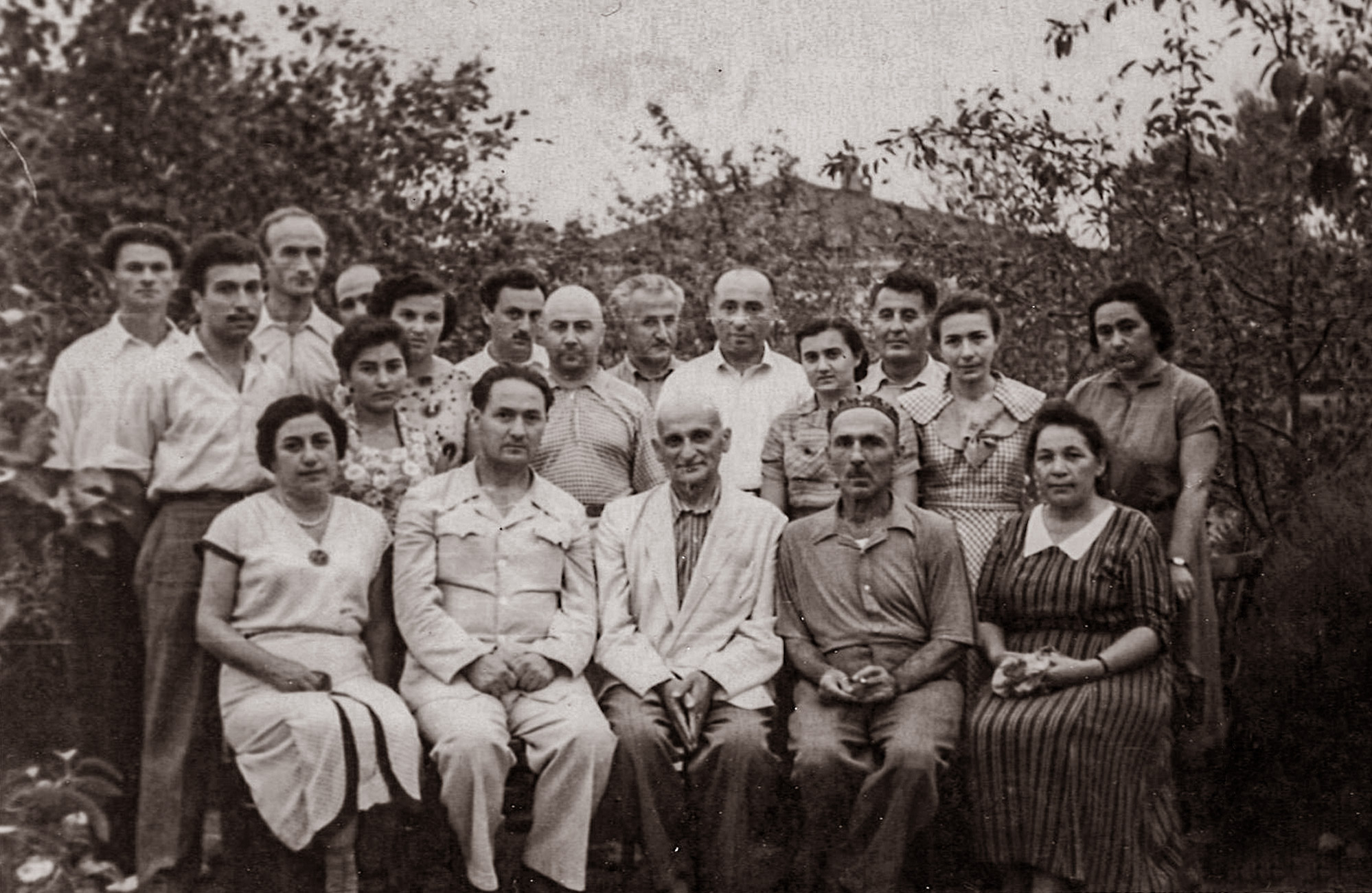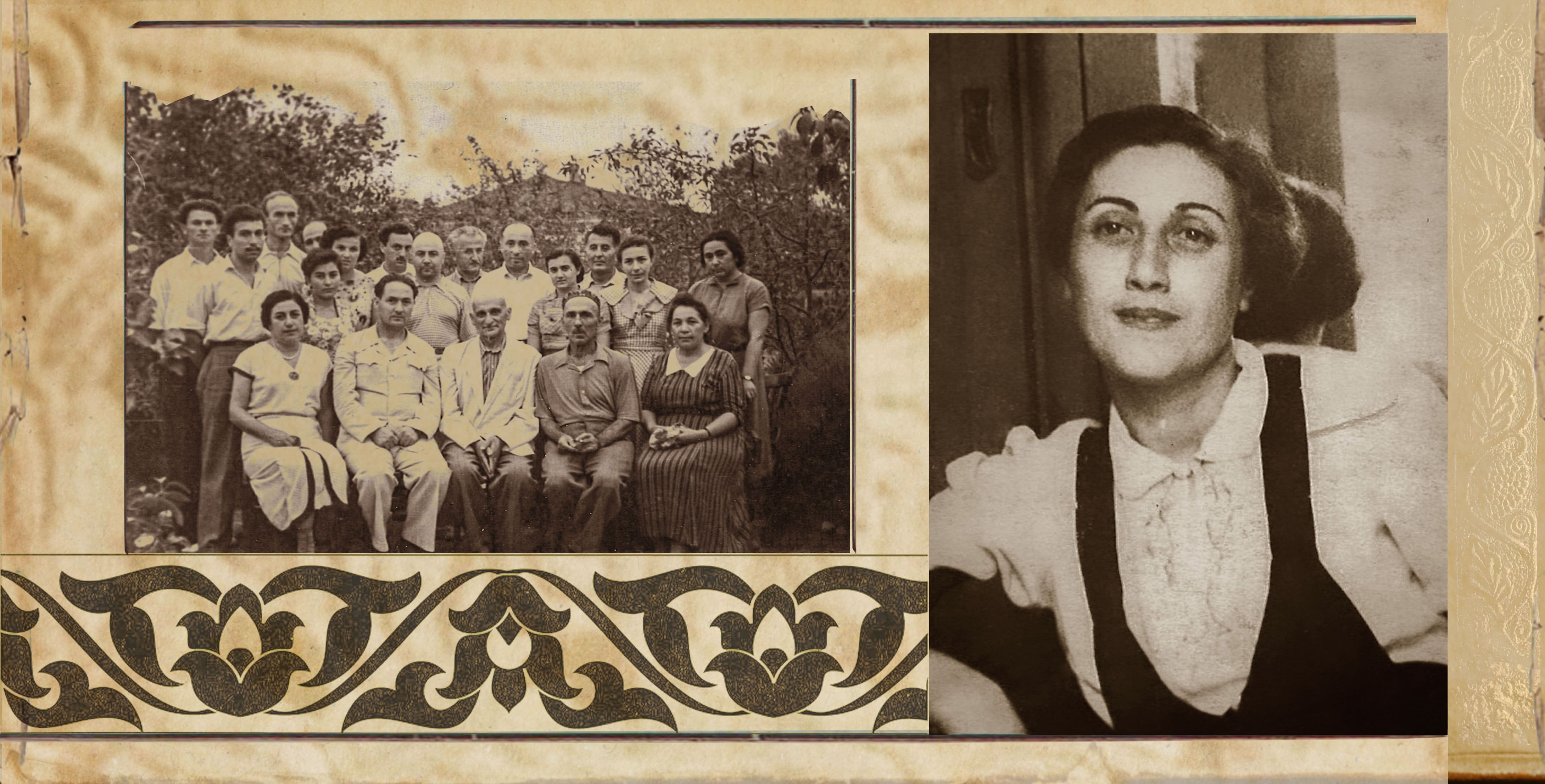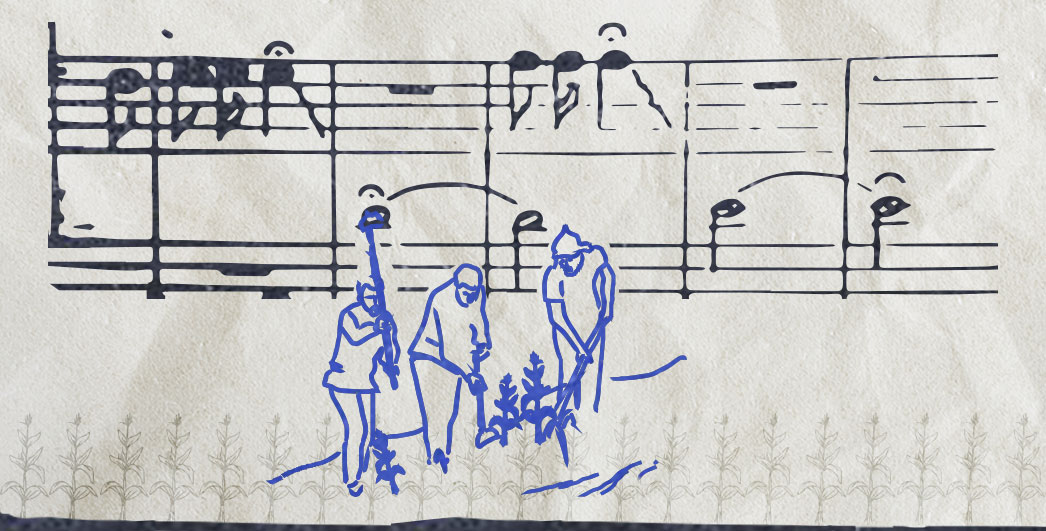In the Footsteps of Tamar Mamaladze
The Path to Tamar Mamaladze
For many years, tackling difficult challenges has been something of a passion for me — the greatest joy comes from overcoming obstacles that initially seem insurmountable.
Over time, I have collected many such stories, some grand, others more modest. Among them, the story of Tamar Mamaladze holds a particularly special place.
If I recall correctly, in 2014 the ethnomusicologist Nino Razmadze told me that the Ivane Javakhishvili Institute of History and Ethnology houses unique expedition materials related to Tamar Mamaladze — including audio recordings and manuscripts. Having collected Georgian folk song recordings since 2010, this immediately sparked my interest.
I was eager to listen to the recordings and familiarise myself with the manuscripts. Upon visiting the institute, I met with the archive custodian, Nikoloz Gurgenidze, who confirmed the existence of Mamaladze’s materials in the collection. He explained that the institute was open to projects aimed at making the materials publicly accessible.
I cautiously offered my collaboration and shared the idea of publication of the collection. Mr Gurgenidze regarded me with the healthy suspicion common to archivists — perhaps my youth (I was only 19 at the time) and lack of professional musical connections made gaining his trust challenging.
Nevertheless, our conversation ended on an optimistic note, with hope that we would soon begin work on this idea.
Unfortunately, the relocation of the institute and the accompanying technical difficulties delayed the process. However, I did not stop thinking about the project or discussing it with friends. Later, I learned that in the early 2000s, ethnomusicologist Manana Shilakadze, an employee of the Institute of History and Ethnology, had handed over some of Mamaladze’s audio recordings to the Tbilisi State Conservatoire for digitisation.
The circle of people interested in traditional music is not particularly large, and unpublished archival recordings are often circulated informally. This is how Tamar Mamaladze’s expedition recordings eventually found their way into my archive. Using these recordings, we began to refresh the repertoire of the Adilei ensemble and revived a number of unique Georgian folk songs.
In 2020, I visited the Institute of Ethnology once again, this time accompanied by my older friend and colleague, David Shugliashvili.[1] I reminded Mr Nikoloz of who I was, and once again we spoke about the importance of publishing the Mamaladze archive. Despite our mutual enthusiasm, for various reasons, this meeting, too, failed to bring about any tangible results.

Tamar Mamaladze
A year later, I began working at the State Folklore Centre. While discussing future projects with the Centre’s director, Giorgi Donadze, I named the study of Tamar Mamaladze’s archive as one of the priority tasks—an idea he supported without hesitation. Following this, I contacted the Institute of History and Ethnology on behalf of the Folklore Centre. Finally, after several years of waiting, we launched the project in 2021.
The first stage involved digitising the entire collection of existing magnetic tapes (the well-known reels), flexible records, and the manuscript archive. Along the way, I quite accidentally came across previously unknown recordings by Mamaladze—for example, in the Conservatoire and in the personal archive of David Shugliashvili. In total, nearly 30 hours of audio material and up to 5,000 manuscript pages were digitised.
Becoming acquainted with Tamar Mamaladze’s diaries only deepened my appreciation of the remarkable scale and depth of her efforts. My admiration for her work soon sparked a growing curiosity about her personality. The expedition diaries refer to the tradition bearers (ethnophores) she recorded in different regions—more than 1,000 of them. Though their names meant nothing to me at the time, I realised that these were the very people to whom we owe thanks for safeguarding and passing on our national musical heritage. And so, another desire was born—to uncover their stories.
The Path of Tamar Mamaladze
Before setting off on a journey in the footsteps of Tamar Mamaladze, I decided to search for her descendants. I learned from ethnomusicologist Nanuli Maisuradze, Tamar’s colleague and friend, that Tamar had lost a young child, and that there was no information about any other descendants. At first glance, the task did not seem simple. Many people told me it would be impossible to find even a distant relative who might have kept materials belonging to someone who had passed away in 1972. However, I couldn’t believe that after such significant work, Tamar’s life could vanish without a trace. I asked everyone involved in the field whether they had ever heard anything about Tamar or her descendants, and the answer was always the same – until one day, I put the question to ethnomusicologist Nunuka Shvelidze. Ms Shvelidze told me that many years ago she had heard about Tamar Mamaladze from her classmate at the conservatoire, Rusudan Chichinadze. I immediately contacted Ms Chichinadze. She recalled that, as a student, she had once rented a flat with a girl named Mamaladze from Zestaponi, who was a relative of Tamar.

Expedition in Adygea, 1957. First row: from the left – Tamar Mamaladze, third – Giorgi Chitaia.
This information proved very helpful, as the Mamaladze family mainly originates from the village of Khevi in the Chokhatauri district, and it seemed unlikely that many families with this surname would be found in Zestaponi.
I set to work: I joined the Facebook group “Zestaponi da Zestaponelebi” and also reached out to relatives and friends who had some connection to the area. I didn’t have to wait long – that same evening, I received several messages informing me that there was only one person with the surname Mamaladze living in Zestaponi, and her name was Tamar. I was even given her phone number.
I called, and to my amazement, she turned out to be a relative of Tamar Mamaladze!
The very next day, a team from the Folklore Centre and I travelled to Zestaponi and visited her home. It turned out that the renowned Tamar Mamaladze had been her grandfather’s cousin. To be honest, I was slightly disappointed at first – I couldn’t quite believe that personal materials belonging to someone that distantly related would have survived. Fortunately, I was mistaken.
Mrs Tamar had preserved two photo albums belonging to Tamar Mamaladze, along with her diploma, work permits, and other documents. We talked about the family, they kindly entrusted me with the materials, and we returned to Tbilisi.
Later, we also located Tamar Mamaladze’s personal file at the Tbilisi State Conservatoire, which contained further details that enriched her biography.
Before long, I began searching for the descendants of the individuals Tamar Mamaladze mentions in her diaries – the very people through whom these unique recordings have survived. A deep sense of gratitude and responsibility towards them led me, together with friends and colleagues, to visit around 140 villages, meeting with the descendants of the old singers. Through them, I was able to learn more about the ethnophores documented by Tamar.
In essence, over the course of a year and a half – and decades later – we retraced the path of Tamar.[2]
It was a journey filled with adventures and extraordinary stories.
People were deeply moved when they learned that we wanted to hear the stories of their grandfathers – men whose names, in many cases, were on the brink of being forgotten. Each encounter was marked by tears of joy and a yearning for the past, turning into many unforgettable memories.
One particularly emotional meeting stands out. In the village of Kedlebi, Khulo district, Tamar Mamaladze had recorded the story of a mechibone (bagpiper) named Rostom Jimsheradze in the 1950s. It was with his descendants that we were due to meet. As it turned out, our guide, Avtandil Bolkvadze, had informed the family in advance. They gathered everyone: some travelled specially from Batumi; others joined us from Beshumi. They said: “They came for Neney’s stories – how could we not come too?” (In Upper Adjara, Neney means mother.)
The remarkable mechibone Temur Ardzenadze from the village of Dandalo in Keda was also invited to the gathering. It was a truly special meeting. We also filmed it – the video below begins with Rostom Jimsheradze’s children singing, followed by dancing. It was an incredible sight: Rostom’s grandson, great-grandson, and great-great-grandson all dancing together!
I have tried to briefly share a story that brings back to life the forgotten names and deeds of our ancestors.
The crowning final stage of this work will be a collection, to be released at the end of the year, comprising several volumes: Tamar Mamaladze’s monograph, her academic writings, expedition diaries, audio recordings, and stories about the ethnophores she recorded.
A number of people have been involved in the project: Teona Rukhadze, Nana Mzhavanadze, Tamar Asatiani, Ilia Jgharkava, Lika Lolashvili, Ketevan Margiani, Maya Lomia, kakha Changashvili, Teona Benashvili, Ani Kveladze, Keti Latsabidze, Nunuka Shvelidze, Nana Kalandadze, Mariam Ebanoidze, and Roma Kalandadze, Merab Lomidze, Giorgi Devdariani.
Special thanks go to everyone who helped me find the descendants of old singers in the regions and who traced at least one family.
The results of this project, which will make accessible the knowledge Tamar Mamaladze collected in the field over decades—knowledge that has long awaited discovery on archive shelves—will prove invaluable to both researchers of Georgian traditional music and its practitioners.
These expeditions have once again convinced me of how necessary and important it is to know the names and stories of those who have preserved Georgian traditional music for us.
[1]David published a collection, Chven Mshvidoba (Peace to Us), which also includes several versions from Mamaladze’s archive.
See Shugliashvili, David (recorded and compiled). 2020. Kartuli Khalkhuri Simghera: Chven Mshvidoba (Peace to Us: Georgian Traditional Folk Song. 40 select audio recordings of 1907-2005). Tbilisi.
[2]At various times, ethnographers Teona Rukhadze and Nana Mzhavanadze joined me on expeditions. Kakha Changashvili, Paata Mzhavanadze, Giorgi Devdariani, and Merab Lomidze were responsible for our transportation.

%20%E1%83%A1%E1%83%90%E1%83%9C%E1%83%93%E1%83%A0%E1%83%9D%20%E1%83%9C%E1%83%90%E1%83%97%E1%83%90%E1%83%AB%E1%83%94%20-%20%E1%83%9E%E1%83%A0%E1%83%9D%E1%83%94%E1%83%A5%E1%83%A2%E1%83%98%E1%83%A1%20%E1%83%AE%E1%83%94%E1%83%9A%E1%83%9B%E1%83%AB%E1%83%A6%E1%83%95%E1%83%90%E1%83%9C%E1%83%94%E1%83%9A%E1%83%98%2C%20%E1%83%A1%E1%83%90%E1%83%A0%E1%83%94%E1%83%93%E1%83%90%E1%83%A5%E1%83%AA%E1%83%98%E1%83%9D%20%E1%83%A1%E1%83%90%E1%83%91%E1%83%AD%E1%83%9D%E1%83%A1%20%E1%83%AC%E1%83%94%E1%83%95%E1%83%A0%E1%83%98-min.jpg)


